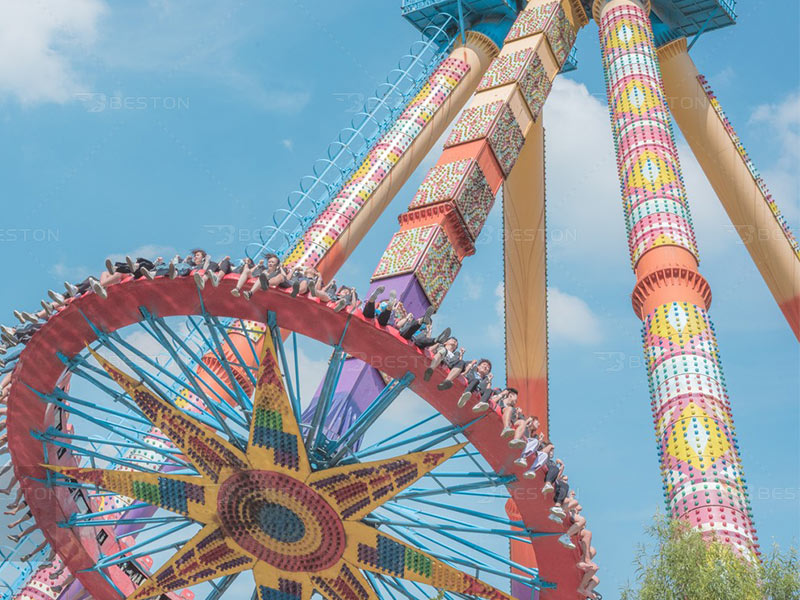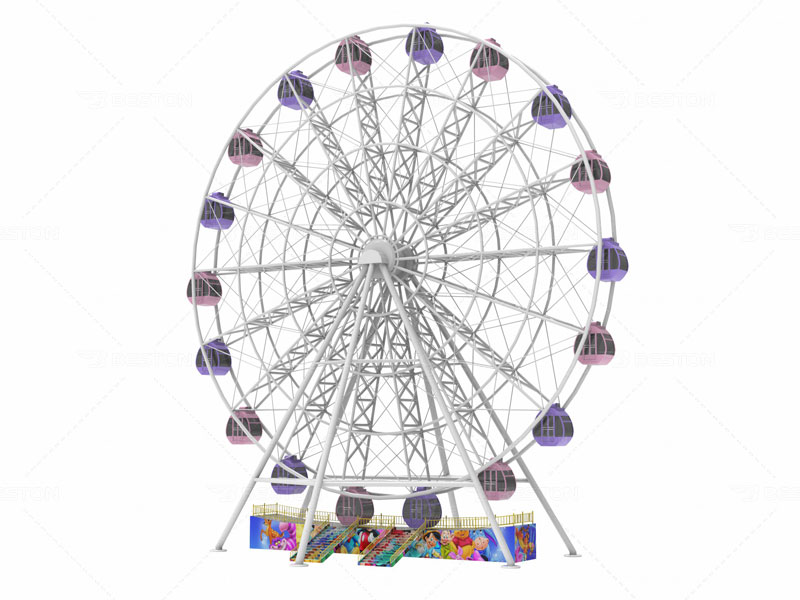“Carnival rides” encompass a wide array of thrilling and entertaining attractions found at fairs, carnivals, amusement parks, and festivals worldwide. These rides have been captivating audiences for generations, offering exhilarating experiences and unforgettable memories. In this 800-word exploration, we’ll delve into the world of carnival rides, examining their history, types, technology, safety, and enduring appeal.

The History of Carnival Rides:
The history of carnival rides dates back centuries, with roots in both European and Asian traditions. Early forms of rides can be traced to medieval Europe, where fairs and celebrations featured simple amusements like swings and spinning platforms.
In Asia, ancient cultures developed their own versions of amusement rides. One notable example is the Chinese “flying chair,” a precursor to the modern swing ride. These early rides were often powered by manpower, animals, or simple mechanical systems.
As time passed, technological advancements allowed for the creation of more complex and thrilling rides. The Industrial Revolution played a significant role in this evolution, as steam and later electric power enabled the development of larger and more extravagant attractions.

Types of Carnival Rides:
Carnival rides come in a diverse range of types and categories, catering to a wide spectrum of tastes and preferences. Some of the most iconic and popular carnival rides include:
- Ferris Wheel: The Ferris wheel for sale is a timeless classic, featuring rotating passenger cabins that provide panoramic views of the surroundings.
- Roller Coasters: Roller coasters come in various sizes and styles, from mild family coasters to high-speed thrill rides with inversions and steep drops.
- Swing Rides: Swing rides consist of suspended seats that swing outward as the ride rotates, creating a sensation of soaring through the air.
- Spinning Rides: Spinning rides, such as the Tilt-A-Whirl and Scrambler, twirl passengers in multiple directions, offering a mix of excitement and disorientation.
- Drop Towers: These rides lift passengers to great heights before plummeting them downward, creating a thrilling freefall sensation.
- Dark Rides: Dark rides are indoor attractions with themed scenes, special effects, and often interactive elements, providing immersive storytelling experiences.
- Water Rides: Water flume rides and log rides offer a refreshing splash as passengers navigate watery courses and thrilling drops.
- Carousel: Carousels, with their beautifully adorned horses and other animals, are beloved by riders of all ages.
- Bumper Cars: Bumper cars provide a chance for friendly collision as riders navigate electrically powered vehicles within a designated area.
- Kiddie Rides: Designed for younger visitors, kiddie rides often mimic the appearance of larger thrill amusement rides for sale but are scaled down for safe and age-appropriate fun.
Technology Advancements:
The carnival ride industry has seen significant technological advancements over the years. Modern rides incorporate sophisticated engineering, safety systems, and special effects. Here are some notable innovations:
- Computer Control: Many carnival rides now use computer control systems to manage ride sequences, monitor safety parameters, and optimize operations.
- Virtual Reality (VR): Some rides incorporate VR headsets to provide riders with immersive and interactive experiences, taking them to fantastical worlds.
- LED Lighting: Advanced LED lighting systems create dazzling visual effects, enhancing the aesthetics of rides, especially during evening hours.
- Sound Systems: High-quality sound systems enhance the overall experience by providing synchronized music and audio effects.
- Hydraulic Launch Systems: Certain thrill rides employ hydraulic launch systems to propel passengers from a standstill to high speeds in seconds, delivering intense thrills.
- Interactive Elements: Dark rides and shooting gallery attractions incorporate interactive elements, allowing riders to participate in the storyline.
Safety Measures:
Safety is paramount in the carnival ride for sale industry. Rigorous safety standards and inspections are in place to ensure the well-being of riders. Key safety measures include:
- Regular Inspections: Rides are subject to frequent inspections by trained professionals to check for any wear and tear, structural issues, or mechanical problems.
- Maintenance: Ongoing maintenance is crucial to keep rides in optimal condition. This includes lubrication, parts replacement, and thorough checks.
- Ride Operators: Trained ride operators oversee the loading, unloading, and operation of rides, ensuring that all safety protocols are followed.
- Safety Barriers: Rides feature safety barriers, harnesses, and restraints designed to secure passengers during the ride.
- Height and Health Restrictions: Many rides have height and health restrictions to prevent individuals who may be at risk from participating.
- Emergency Procedures: Rides have emergency stop mechanisms and evacuation procedures in place in case of technical issues.
The Enduring Appeal:
Carnival rides continue to capture the hearts of people of all ages for several reasons:
- Thrill and Excitement: Rides offer an adrenaline rush and a sense of adventure, making them irresistible to thrill-seekers.
- Nostalgia: For many, carnival rides evoke cherished childhood memories, making each visit a nostalgic journey.
- Community and Socializing: Visiting amusement parks and carnivals is often a communal and social activity, allowing friends and families to bond and create shared experiences.
- Escapism: Rides transport riders to different worlds, providing an escape from everyday life.
- Aesthetics and Atmosphere: The colorful lights, music, and festive atmosphere of amusement parks and carnivals add to their charm.
